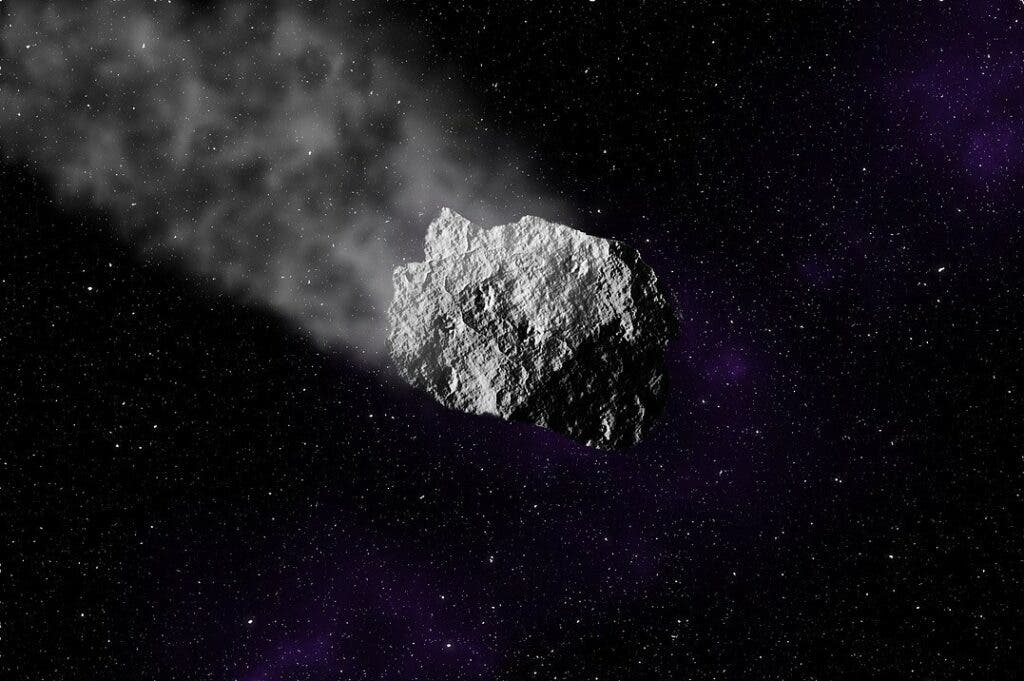About 71% of the Earth’s surface is covered by water, the most of any known rocky planet. According to the U.S. Geological Survey, there are 332,519,000 cubic miles of water on the globe. So, this brings about an interesting question. Where did it all come from? Turns out a lot of it probably originated from space dust.
In a study published in Nature Astronomy, a team of researchers from the UK, Australia and the United States studied samples collected by the Japanese space probe Hayabusa from the asteroid Itokawa. They concluded that extraterrestrial dust grains carried moisture to Earth as the planet formed, which resulted in Earth’s water. The water in the grains was produced by space weathering, a process by which solar winds, charged particles from the Sun, altered the chemical composition of the grains to produce water molecules.
“As recently as a decade ago, the notion that solar wind irradiation is relevant to the origin of water in the solar system, much less relevant to Earth’s oceans, would have been greeted with skepticism,” said John Bradley, of the University of Hawai‘i at Mānoa, a co-author of the paper. “By showing for the first time that water is produced in-situ on the surface of an asteroid, our study builds on the accumulating body of evidence that the interaction of the solar wind with oxygen-rich dust grains does indeed produce water.”
Solar winds are streams made of mostly hydrogen and helium ions that constantly flow from the Sun into space. When those hydrogen ions strike an airless surface such as an asteroid, they pierce tens of nanometres below the surface. From here they can change the chemical composition of the rock. Over time, the ‘space weathering’ effect of the hydrogen ions can eject enough oxygen atoms from materials in the rock to create H2O trapped within minerals on the asteroid.
A popular belief suggested that asteroids rich in carbon delivered water to the planet when they crashed into a just-forming Earth 4.6 billion years ago. To test the whole dust space/water hypothesis, scientists previously analyzed the isotopic ‘fingerprint’ of chunks of C-type asteroids that have fallen to Earth as water-rich carbonaceous chondrite meteorites. If the ratio of hydrogen and deuterium in the meteorite water lined up with that of terrestrial water, then it could be concluded that C-type meteorites were the most-likely source.
And that’s sort of what they found…sort of.
While some water-rich meteorites’ deuterium/hydrogen fingerprints did indeed match our planet’s water, many did not. On average, these meteorites’ liquid fingerprints didn’t line up with the water found in Earth’s mantle and oceans. Instead, Earth has a different, slightly lighter isotopic fingerprint.
In other words, the forming Earth must have received water from at least one more isotopically-light source which originated somewhere else in the Solar System. Now researchers have that missing piece.
Using an analytical process called atom probe tomography, the researchers scrutinized samples from Itokawa, which is an S-type asteroid. This enabled the team to measure the atomic structure of the grains one atom at a time and detect individual water molecules. Their findings suggest that a significant amount of water was produced just below the surface of dust-sized grains from Itokawa by space weathering.
“Our research suggests the solar wind created water on the surface of tiny dust grains and this isotopically lighter water likely provided the remainder of the Earth’s water,” said Phil Bland, a John Curtin Distinguished Professor at the School of Earth and Planetary Sciences at Curtin University and co-author of the paper. “Our world-class atom probe tomography system here at Curtin University allowed us to take an incredibly detailed look inside the first 50 nanometres or so of the surface of Itokawa dust grains, which we found contained enough water that, if scaled up, would amount to about 20 liters for every cubic meter of rock.”
The study has ramifications beyond what we find on our home planet though. Their estimates of just how much water might be contained in space-weathered surfaces also suggest a way future space explorers could manufacture supplies of water on even the most seemingly arid planets.
“One of the problems of future human space exploration is how astronauts will find enough water to keep them alive and accomplish their tasks without carrying it with them on their journey,” said Hope Ishill of UH Manoa. “We think it’s reasonable to assume that the same space weathering process which created the water on Itokawa will have occurred to one degree or another on many airless worlds like the Moon or the asteroid Vesta. That could mean that space explorers may well be able to process fresh supplies of water straight from the dust on the planet’s surface. It’s exciting to think that the processes which formed the planets could help to support human life as we reach out beyond Earth.”



